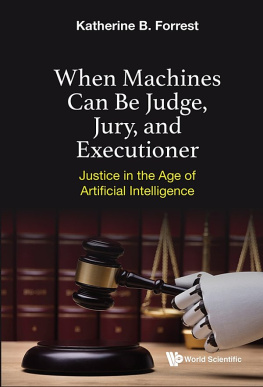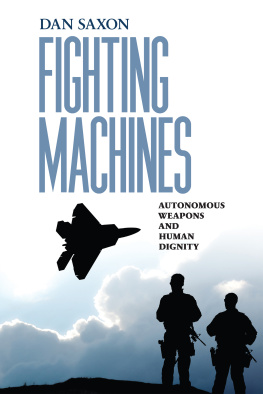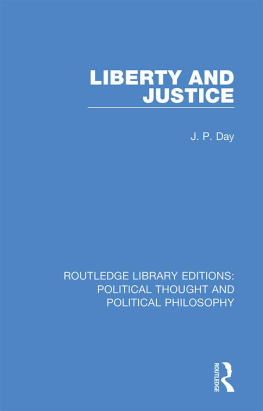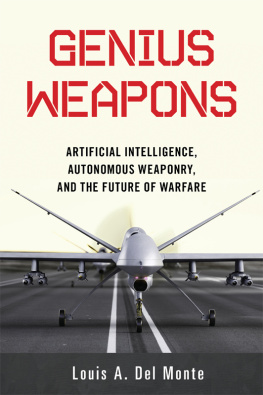When Machines Can Be Judge, Jury, and Executioner
Justice in the Age of Artificial Intelligence
Highly Recommended Titles
Artificial Intelligence/Human Intelligence: An Indissoluble Nexus
by Richard J Wallace
ISBN: 978-981-123-287-9
ISBN: 978-981-123-308-1 (pbk)
Intelligent Automation: Welcome to the World of Hyperautomation Learn How to Harness Artificial Intelligence to Boost Business & Make Our World More Human
by Pascal Bornet, Ian Barkin and Jochen Wirtz
ISBN: 978-981-123-548-1
ISBN: 978-981-123-559-7 (pbk)
Brain vs Computer: The Challenge of the Century is Now Launched
Second Edition
by Jean-Pierre Fillard
ISBN: 978-981-122-500-0
ISBN: 978-981-122-626-7 (pbk)
What Makes You Clever: The Puzzle of Intelligence
by Derek Partridge
ISBN: 978-981-4513-03-6
ISBN: 978-981-4513-04-3 (pbk)
Impossible Minds: My Neurons, My Consciousness
Revised Edition
by Igor Aleksander
ISBN: 978-1-78326-568-8
ISBN: 978-1-78326-569-5 (pbk)
When Machines Can Be Judge, Jury, and Executioner
Justice in the Age of Artificial Intelligence
Katherine B. Forrest

Published by
World Scientific Publishing Co. Pte. Ltd.
5 Toh Tuck Link, Singapore 596224
USA office: 27 Warren Street, Suite 401-402, Hackensack, NJ 07601
UK office: 57 Shelton Street, Covent Garden, London WC2H 9HE
Library of Congress Cataloging-in-Publication Data
Names: Forrest, Katherine Bolan, 1964 author.
Title: When machines can be judge, jury, and executioner : justice in the age of artificial intelligence / Katherine B. Forrest.
Description: Hackensack, NJ : World Scientific Publishing Co. Pte. Ltd., [2021] | Includes bibliographical references.
Identifiers: LCCN 2021009800 | ISBN 9789811232725 (hardcover) | ISBN 9789811232732 (ebook other) | ISBN 9789811232749 (ebook other)
Subjects: LCSH: Criminal justice, Administration of--United States--Data processing. | Artificial intelligence--Law and legislation--United States. | Judicial process--United States--Data processing | Decision making--Moral and ethical aspects--United States.
Classification: LCC KF9223 .F67 2021 | DDC 345.7300285/63--dc23
LC record available at https://lccn.loc.gov/2021009800
British Library Cataloguing-in-Publication Data
A catalogue record for this book is available from the British Library.
Copyright 2021 by World Scientific Publishing Co. Pte. Ltd.
All rights reserved. This book, or parts thereof, may not be reproduced in any form or by any means, electronic or mechanical, including photocopying, recording or any information storage and retrieval system now known or to be invented, without written permission from the publisher.
For photocopying of material in this volume, please pay a copying fee through the Copyright Clearance Center, Inc., 222 Rosewood Drive, Danvers, MA 01923, USA. In this case permission to photocopy is not required from the publisher.
For any available supplementary material, please visit
https://www.worldscientific.com/worldscibooks/10.1142/12172#t=suppl
Desk Editor: Amanda Yun
Typeset by Stallion Press
Email: enquiries@stallionpress.com
Printed in Singapore
For Amy, because you solved the formula: Y(8000), +2.
Acknowledgments

I have written many articles before, but this is my first non-fiction book. It was a project that occupied virtually any alleged non-working hours for eighteen months. I spent weekends, nights and early mornings digging, digging, reading and writing. I would not have finished the book without the incredible patience and editorial assistance of my partner, Amy Zimmerman, and my daughter, Jane Baldwin. Both spent countless hours as I headed to the finish line, editing and challenging me. I am so grateful.
I also want to thank Kevin Cain for his thoughtful advice, and Nicolas Economou who has invited me to participate in numerous events where I was able to speak on topics directly relevant to this book.
About the Author


K atherine B Forrest is a former federal judge of the Southern District of New York. She recently returned to private practice at Cravath, Swaine & Moore LLP in New York City, where she focuses primarily on areas of the law involving hi-tech. She is also a regular technology contributor to the New York Law Journal, and lectures and publishes frequently on the topic of artificial intelligence.
Contents

Introduction

T he same technology that allows Amazon to deliver our packages at warp speeds, Google to personalize our search results, and Facebook to tailor our newsfeeds, is now also used to govern the lives and liberties of millions of people. In todays criminal justice system whether youre aware of it or not artifical intelligence (AI) is everywhere: it guides carceral sentences, bail decisions, likehoods of arrest, and even the applications of autonomous military weapons. Put simply, AI is essential to how we, as an American society, dispense justice.
How and why we dispense justice matters. When I was a federal judge, I had to explain the decisions I made about a criminal defendants liberty. If I denied a bail application, and the defendant had to stay behind bars before trial, I had to explain my reason for that decision. When I sentenced a defendant following a conviction, the law required that I lay out why I chose the type and duration of the imposed sentence. If I sentenced a defendant to home confinement or a halfway house, I had to explain myself. If I sent someone to jail, I had to explain not only the basis of the incarceration, but why I chose a particular length of time. Why 13 months and not 12 or 14? 25 and not 26? The specifics of these particulars matter because the fairness is in the details.
As a public servant, I was accountable not only to myself, the plaintiff and the defendant, but to a larger American ideal: if a judge upholds the law unequally, picking and choosing his definitions of fairness without thought or oversight, then the concept of justice the bedrock of our Constitutional democracy disintegrates.
The law guides this thought and oversight; American legal codes reflect theories of justice that provide frameworks for responding to criminal transgressions. In the federal system, where I served as a judge from 2011 to 2018, I specifically depended on a statutory framework and the Sentencing Guidelines when imposing a sentence: these entities reflect a combination of retributive, rehabilitative, and fairness theories of justice. Eventually, I will explain these theories in more depth; for now, however, I will simply highlight what they lack: a purely utilitarian approach.
The utilitarian theory of justice, in which the good for the greatest number of people trumps individual fairness, went out of legal favor hundreds of years ago. It is unacceptable and, further, unfair to make generalizations about specific groups for the sake of the greater good. For example, should we incarcerate all young people, since they commit the vast majority of crimes, in order to protect our communities from harm? Of course not. We rightly expect fairness and justice at an individual level.









